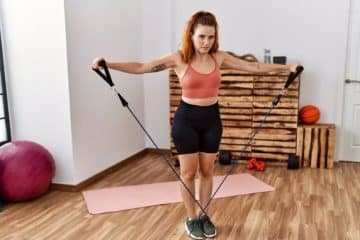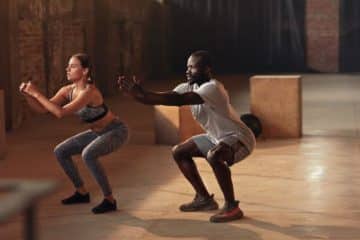When sitting for long periods of time, it is important to vary your body movements in order to decrease stiffness and muscle soreness. Give yourself permission to sit in a neutral, relaxed, and rested position and then take the time to stretch regularly.
In a previous blog article, we talked about the spine, discs, and the cartilage that lines our joints. There are joints between each bone in our spine.
Since these joints don’t have big blood supplies, it’s really important for those structures to move in order to stay healthy.
The discs and the cartilage that line the joints get nutrition from movement. If we don’t move in certain directions, the cartilage tissue thins.
Moreover, our skull and brain are heavy and we rely on our small muscles and joints in our neck for support, stabilizing, and moving our head. It is important that our neck has a full range of motion.
If any movement brings you discomfort, either support your head with your hands or goes through the movement lying down.
1. Extension
Firstly, begin in an upright sitting position, maintaining good alignment throughout your upper body. Place your hands by your ears or interlace your fingers behind your head.
Gently lean your upper body back against the chair and hold this position for 3-5 seconds. Return to the starting position and then repeat the movement, incorporating neck exercises that don't require traction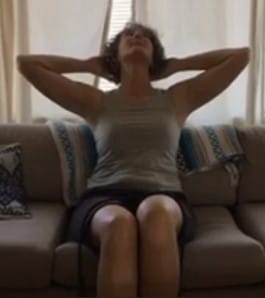
Extension
2. Presses
Basically, begin in an upright sitting position, maintaining good alignment throughout your upper body. Place your hands by your ears or interlace your fingers behind your head. Gently lean your neck back and turn your head to one side, incorporating neck exercises that don't require traction.
Hold this position for 3-5 seconds. Return to the starting position and then repeat the movement on the opposite side.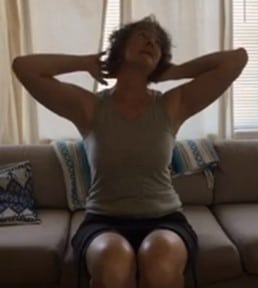
Presses
3. Rotation
Basically, begin in an upright sitting position, maintaining good alignment throughout your upper body.
After that, contract your abdominal muscles and twist your upper body to one side, looking over your shoulder.
Hold this position for 3-5 seconds. Return to the starting position and then repeat the movement on the opposite side.
Rotation
Alternative Rotation Exercises:
Begin in an upright sitting position, maintaining good alignment throughout your upper body. Place your hands by your ears or interlace your fingers behind your head for neck exercises that don't require traction.. Contract your core, then twist your upper body to one side, following the movement with your head.
Hold this position for 3-5 seconds. Return to the starting position and then repeat the movement on the opposite side.
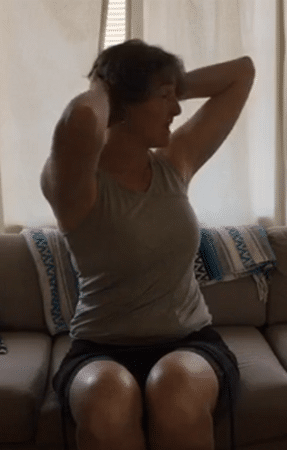
Basically, begin in an upright sitting position, maintaining good alignment throughout your upper body. Place your hands by your ears or interlace your fingers behind your head.
Contract your core then lean back against the chair. Arch and twist your upper body to one side, looking over your shoulder.
Hold this position for 3-5 seconds. Return to the starting position and then repeat the movement on the opposite side.

The neck is an amazing piece of machinery because it works very reflexively. This means that your head automatically turns where you look, even without thinking about it. There are very strong couple reflexes that guide these movements.
When your neck becomes stiff, you can also feel dizzy because those reflexes are not giving you the information you need. We recommend turning your head with your eyes open.
If closing your eyes gets you dizzy, lean back on a chair so you can get more support. You can also support your head with your hands.
Bonus Exercise:
Rotation Exercise with the Tubing:
Having strong upper shoulders also helps our neck muscles. For this exercise, you can use resistant tubing.
Begin in an upright sitting position, maintaining good alignment with your head, shoulders, and hips. Hold the middle of the tubing with both hands and raise your arms overhead. Pull the band apart to create tension or resistance. Turn your head to one side, closing your eyes. Hold this position for 3-5 seconds. Turn your head to return to the center position and then repeat the movement on the opposite side.

Closing your eyes helps to strengthen the connection between what your brain is feeling versus what your eyes are seeing. There is a strong reflex between your eyes and your neck. Challenging this connection by covering your vision helps improve your balance and confidence in moving laterally.




